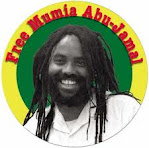Three years before the commander-in-chief of the Grand Army of the Republic called on Union veterans’ organizations to decorate the graves of dead soldiers, blacks in Charleston, South Carolina in 1865 launched the first Decoration Day in honor of the Union’s war dead, says Yale University history professor David Blight...
“Blacks, many of them recently freed slaves, buried the soldiers properly. They put up a fence around the area and painted it. More than 260 were buried there. We don’t know the names. We don’t know the race,” Blight told BlackAmericaWeb.com.
Following the burials, there was a ceremony.
Blight found more information about the rites in old newspapers and magazines such as Harper’s Weekly. Several large newspapers from the North would send reporters into the South to cover the war and its aftermath, with some writing narratives with great detail, Blight said.
“At 9 a.m. on May 1, a procession stepped off, led by 3,000 black schoolchildren carrying arm loads of roses and singing. The children were followed by several hundred black women with baskets of flowers, wreaths and crosses. Then came black men marching in cadence, followed by contingents of Union infantry and other black and white citizens," Blight said. “As many as possible gathered in the cemetery enclosure; a children’s' choir sang 'We'll Rally Around the Flag,' 'The Star-Spangled Banner' and several spirituals before several black ministers read from scripture. This was their way of saying what the war meant to me and what America means to me. They were now freed men and women.”- from BlackAmericaWeb.com
On a Monday morning that spring, nearly 10,000 former slaves marched onto the grounds of the old Washington Race Course, where wealthy Charleston planters and socialites had gathered in old times. During the final year of the war, the track had been turned into a prison camp. Hundreds of Union soldiers died there.
For two weeks in April, former slaves had worked to bury the soldiers. Now they would give them a proper funeral.
The procession began at 9 a.m. as 2,800 black school children marched by their graves, softly singing “John Brown’s Body.”
Soon, their voices would give way to the sermons of preachers, then prayer and — later — picnics. It was May 1, 1865, but they called it Decoration Day.
On that day, former Charleston slaves started a tradition that would come to be known as Memorial Day.
- from US Slave
































0 comments:
Post a Comment